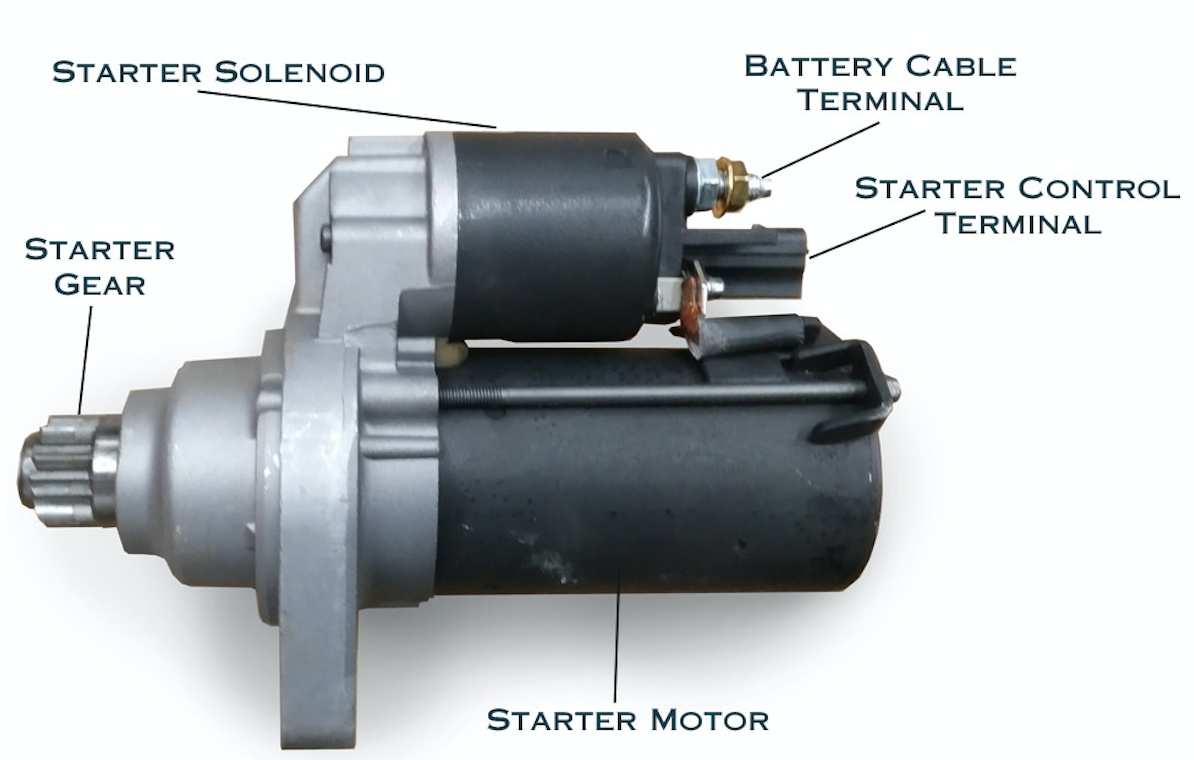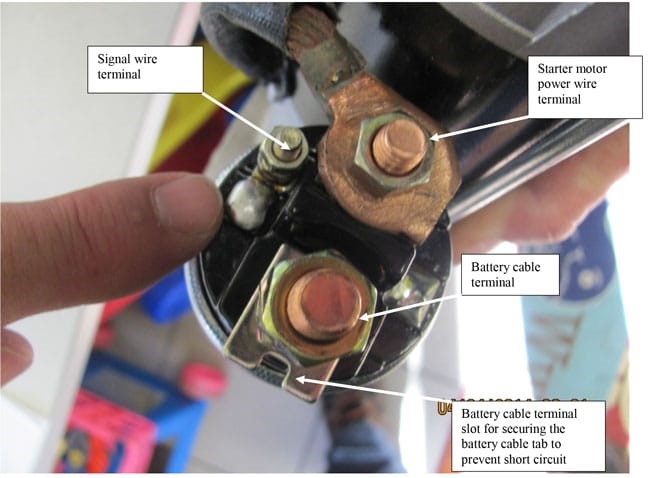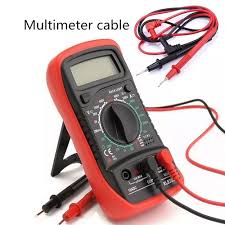
This article mainly analyzes the components, circuit diagram and fault diagnosis of modern automobile engine starting system. Modern automobile engine starting system is basically similar. It is of great significance for mechanic to master the relevant knowledge and fault diagnosis process of starting system.
The car starting system component.
The engine start needs external forces. In order to make the engine transition from static to idle working state, the engine crankshaft flywheel assembly must be rotated by external forces to make the combustible mixture burn in the engine cylinder, so that the engine working cycle can proceed smoothly. The whole process of engine crankshaft flywheel assembly running from rest to idle under the action of external forces is called engine start. Automobile engine starting system is generally composed of battery, ignition switch, starter relay, starter safety switch, starter motor, starter cable, grounding cable and other circuit.
Function of the starting system components
The car battery provides electric energy to the starter motor during the starting process. When the car starts, the starting current is relatively high, the gasoline engine is generally 200 ~ 600A, the diesel engine is generally 800 ~ 950A. In order to make the battery voltage to restore, the starting time should not exceed 6s, restart interval should reach 20s, otherwise the battery excessive discharge, leading plate sulfurization. If the engine cannot be started after three times attempt, it should be started after an interval of 2min on the basis of checking and troubleshooting. When the car engine starts, you must immediately cut off the control circuit of the starter to stop the starter, otherwise it will damage the pinion of the starter and make the starter unable to work.
(1) The starter switch. It controls the starter works by starter relays (or starter’s magnetic coils).
(2) The starter relay. It is controlled by the starter switch, using the small current to control the large current. The starter relay controls the the conducting and cutting state of the starter magnetic coil.
(3) The starter fuse plays a protective role in the starter circuit. If the starting current is too large, the starter fuse will automatically fuse to protect other important parts of the starter circuit from damage.
(4) The starter cable. It connects the battery anode to the starter terminal.
(5) The grounding cable. It is the connection part of the negative electrode of the battery to the metal parts such as the body frame.
The starter is the most important core part of the automobile starting system, composed of three parts: DC motor, transmission motor and control device. The function of DC motor is to convert the electric energy of battery into mechanical energy, generating electromagnetic torque. The function of transmission mechanism is to make the drive pinion of the engine to mesh with the gear ring of the engine flywheel, and transfer the torque to the crankshaft, so as to drive the piston connecting rod to reciprocate up and down. When the engine starts, the drive gear slips automatically and separates from the gear ring of the flywheel automatically, and cut off the power transmission, so as to prevent the motor from being damaged by the excessive rotation caused by the engine. The control device is a solenoid switch, its function is to control the effective meshing and separation of drive gear and flywheel gear ring, and control the switch on and off in starter circuit.
Common fault diagnosis and troubleshooting. The starting system is the starter motor does not work, the starter is unable to run, the starter idles, the starter is slip. The most common of these failures are the starter doesn’t run and the starter is weak power.

1. Diagnosis and troubleshooting - the starter doesn’t work
Starter circuit analysis
Taking the starter circuit as an example. Starter relay, starter safety switch and ignition switch. The main car battery terminal, a main larger battery cable post from the battery post. The start wire terminal from the starter switch. The starter fielding wire connects the field winding. The starter switch is turned on and start the starter motor. The working circuit of the car starting system is as follows: positive post of battery → ignition switch → the starter motor fuse → the neutral safety switch → the terminal of starter relay coil → ground → negative post of battery → the car starter starts to work. The neutral safety switch is a safety device that only allows you to start your engine when the automatic transmission is in either Park or Neutral. The purpose of the neutral safety switch is to prevent the car from starting while in gear, which would cause it to launch forward unexpectedly.

Failure analysis
The car starter does not work means the starter switch is on the starting position, but the starter does not operate. There are many reasons for this fault. One of the reasons is the battery power supply system has problems, such as low battery power, the main power supply of fuse or the relay is damage, the loose starter cables and battery terminal posts, or oxidation of terminal posts. The second reason is fault of starter relay, such as short circuit and grounding inductance coil, the ablation of moving contact or static contact of starter relay, large gap between iron core and contact point, etc. The third reason is the starter fault: such as the starter DC motor fault, transmission mechanism fault, control device fault. The fourth reason is the starter switch fault, the car starting gear malfunction.
Fault diagnosis method
(1) Check the battery. When the horn doesn’t work, instrument lights and headlight are dim, or electric windows is abnormal. Check whether the battery terminal is oxidation or bad contact, or battery is bad ground. The measured starter voltage should be greater than 9.6 V.
(2) Check the starter motor. Connect the main connecting pole of the cable on the starter motor to the starter terminal. If the starter motor cannot work, it means there is a fault in the solenoid switch, and the starter motor shall be removed for maintenance.
(3) Check the ignition switch and ignition switch circuits.
(4) Check the starter relay and starter fuse to determine the failure point.
2. Diagnosis and troubleshooting - the starter motor is weak power
Failure of the starter
It refers to the fact the engine can be driven by starter motor, but the speed is too low (the normal idle speed of the car engine is 800r/min). In severe cases, the engine stops and the power of the engine is obviously insufficient.
Fault diagnosis
There are many reasons for the weak operation of the car starter. One of the reasons is the battery loses power, causing less power to the starter, or the battery starter cable is in bad contact. The second reason is the fault of the starter, such as the aging of the starter, the short circuit inside the starter, the starter is internal ground, etc. The third reason is circuit problems, such as battery starter cable leakage, aging and leakage between starter relay and the starter circuit.
Fault diagnosis and troubleshooting
(1) Check the connection condition of the car battery cable. If the battery terminal and the starter cable are hot, remove the starter cable, and clean the battery post and the starter cable with sandpaper. After cleaning, tighten the starter cable again with standard torque.
(2) Check whether the starting voltage of the car is within the standard range. Generally, the starting voltage of the car is greater than 9.6V. The method is to turn the multimeter to the position (20V), connect the red probe of the multimeter to the positive post of the battery, and connect the black probe to the negative post of the battery. Observe the starting voltage displayed by the multimeter and start the car. If the starting voltage of the car is lower than 8V, there will be no response from the starter. If the starting voltage is between 8V ~ 9.6V, the starter is unable to start. If the starting voltage is more than 9.6V, there is no problem with the starting voltage, the starter can start. This method is one of the important diagnostic method to determine the starting voltage problem.

(3) Check whether the starter circuit is aging or leakage. The method is to use multimeter to detect the voltage of each contact point in turn, and determine whether the circuit is aging or ground, resulting in a weak starter.
(4) If there is no problem in the previous three diagnostic steps, it is necessary to troubleshoot the starter and restore its performance. If it cannot be repaired, replace the starter.
 James Smith
James Smith  October 18, 2020
October 18, 2020